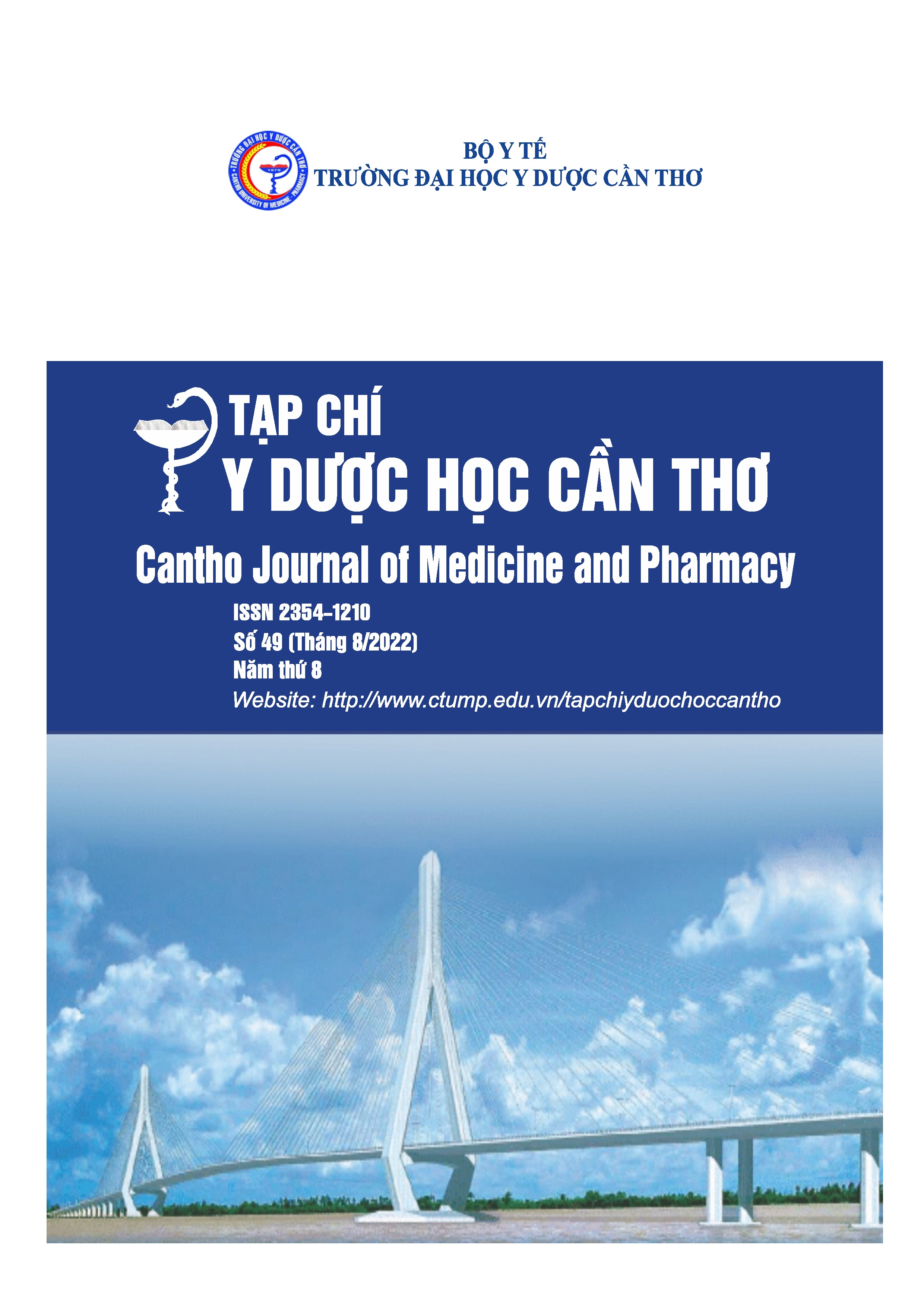ĐẶC ĐIỂM HÌNH THÁI KHỚP THÁI DƯƠNG HÀM TRÊN BỆNH NHÂN RỐI LOẠN THÁI DƯƠNG HÀM
Nội dung chính của bài viết
Tóm tắt
Đặt vấn đề: Rối loạn thái dương hàm là thuật ngữ chung chỉ tình trạng đau miệng mặt, là tình trạng đau không liên quan đến răng phổ biến nhất ở vùng hàm mặt. Chẩn đoán hình ảnh được coi là một phương pháp hỗ trợ hữu ích trong chẩn đoán rối loạn thái dương hàm đặc biệt là chụp cắt lớp điện toán chùm tia hình khối. Mục tiêu nghiên cứu: Khảo sát đặc điểm hình thái khớp thái dương hàm trên bệnh nhân rối loạn thái dương hàm. Đối tượng và phương pháp nghiên cứu: thiết kế nghiên cứu cắt ngang mô tả trên 32 bệnh nhân rối loạn thái dương hàm đến khám và điều trị tại Bệnh viện Răng Hàm Mặt thành phố Hồ Chí Minh từ 11/2021 đến 3/2022. Mỗi bệnh nhân nhân được khảo sát đặc điểm hình thái khớp thái dương hàm về hình dạng đầu lồi cầu và tương quan lồi cầu hõm khớp trước khi điều trị bằng phim cắt lớp điện toán chùm tia hình khối. Dữ kiện được xử lý bằng phần mềm SPSS. Kết quả: Lồi cầu được phân loại thành năm hình dạng. Trong phân loại này, lồi cầu dạng tam giác chiếm đa số. Tương quan lồi cầu hõm khớp được xác định bằng kích thước khoảng gian khớp. Theo chiều trước sau, khoảng gian khớp chia thành khoảng gian khớp trước, khoảng gian khớp trên, khoảng gian khớp sau. Kết quả cho thấy khoảng gian khớp trước lớn nhất, nhỏ nhất là khoảng gian khớp sau. Kết luận: Hình dạng lồi cầu trên bệnh nhân rối loạn thái dương hàm chủ yếu là dạng tam giác. Về tương quan, lồi cầu thường nằm phía sau trong hõm khớp.
Chi tiết bài viết
Từ khóa
Đặc điểm hình thái, lồi cầu, khoảng gian khớp
Tài liệu tham khảo
2. Dion Tik Shun Li, Yiu Yan Leung (2021), “Temporomandibular Disorders: Current concepts and controversies in diagnosis and management”, Diagnosis (Basel), 11(3), pp.459.
3. Larheim, T.A.; Abrahamsson, A.K.; Kristensen, M.; Arvidsson, L.Z. (2015), “Temporomandibular joint diagnostics using CBCT”, Dentomaxillofac. Radiol, 44, 20140235.
4. Koyama J, Nishiyama H, Hayashi T. (2007), “Follow- up study of condylar bony changes using helical computed tomography in patients with temporomandibular disorder”, Dentomaxillofac Radiol, 36, pp.472-477.
5. Alves (2013), “Morphological Characteristics of the Temporomandibular Joint Articular Surfaces in Patients with Temporomandibular Disorders”, Int. J. Morphol., 31(4), pp.1317-1321.
6. Jaime Gateno (2004), “A Comparative Assessment of Mandibular Condylar Position in Patients with Anterior Disc Displacement of the Temporomandibular Joint”, J Oral Maxillofac Surg. 62, pp.39-43.
7. Ren, Y.-F., Isberg, A., & Westesson, P.-L. (1995), “Condyle position in the temporomandibular joint”, Oral Surgery, Oral Medicine, Oral Pathology, Oral Radiology, and Endodontology, 80(1), pp.101-107.
8. Dion Tik Shun Li, Yiu Yan Leung (2021), “Temporomandibular Disorders: Current concepts and controversies in diagnosis and management”, Diagnosis (Basel), 11(3), pp.459.
9. Yale SH, Allison BD, Hauptfuehrer JD. (1966), “An epidemiological assessment of mandibular condyle morphology”, Oral Surg Oral Med Oral Pathol, 21, pp.169-177.
10. Kazumi Ikeda (2009), “Assessment of optimal condylar position with limited cone-beam computed tomography”, Am J Orthod Dentofacial Ortho, 135, pp.495-501.
11. Vandeput, P.-J. Verhelst, R. Jacobs, E. Shaheen, G. Swennen, C. Politis (2018), “Condylar changes after orthognathic surgery for class III dentofacial deformity: a systematic review”, Int. J. Oral Maxillofac. Surg.
12. Anuna Laila Mathew (2011), “Condylar Changes and Its Association with Age, TMD, and Dentition Status: A Cross-Sectional Study”, International Journal of Dentistry, pp.1-7.
13. J F G de Farias et al. (2015), “Correlation between temporomandibular joint morphology and disc displacement by MRI”, Dentomaxillofacial Radiology, 44, 20150023.
14. Seren, E., Akan, H., Toller, M. O., & Akyar, S. (1994), “An evaluation of the condylar position of the temporomandibular joint by computerized tomography in Class III malocclusions: A preliminary study”, American Journal of Orthodontics and Dentofacial Orthopedics, 105(5), pp.483-488.
15. May Al-koshab (2015), “Assessment of Condyle and Glenoid Fossa Morphology Using CBCT in South-East Asians”, Plos one,10(3), e0121682.


